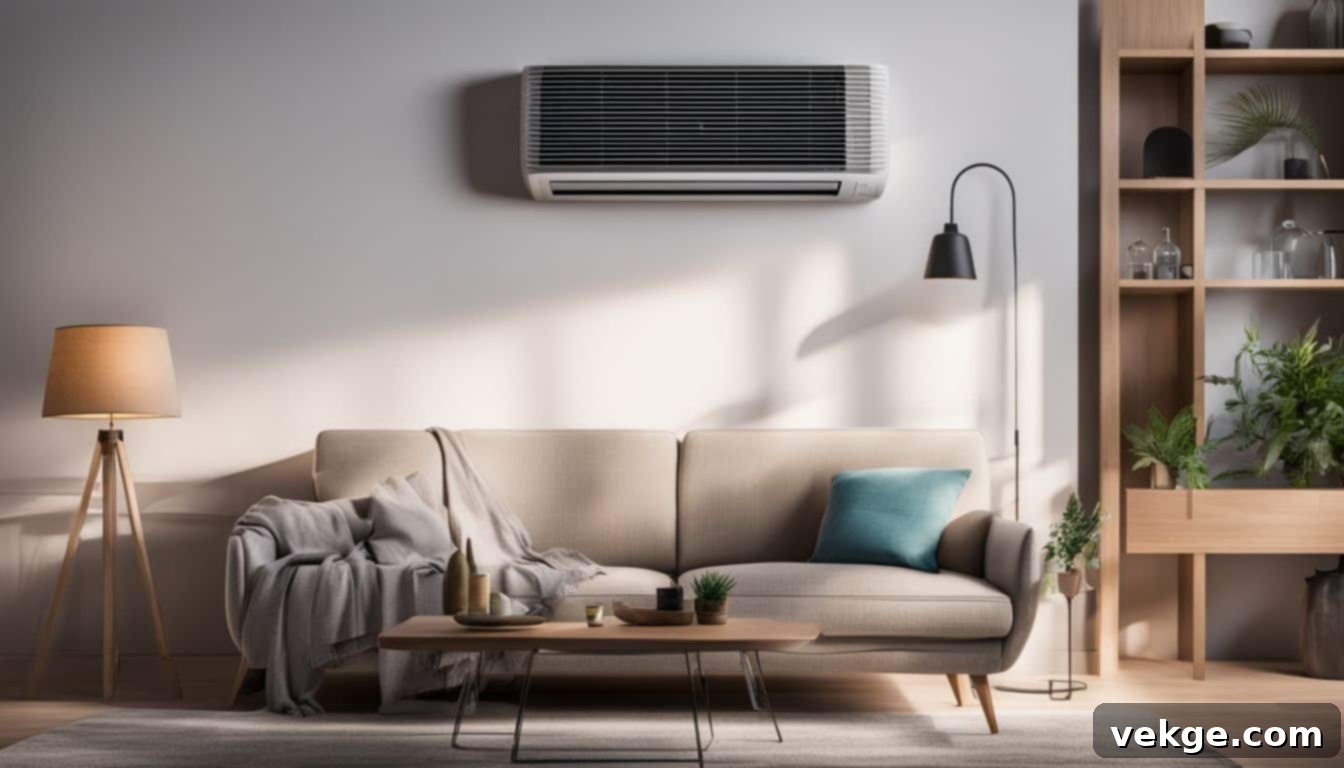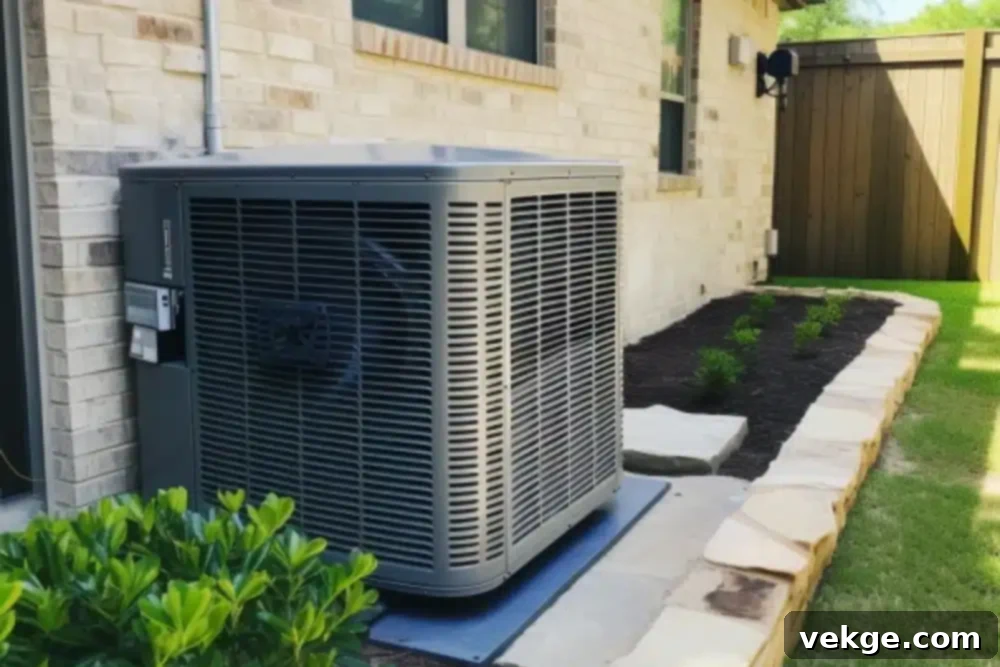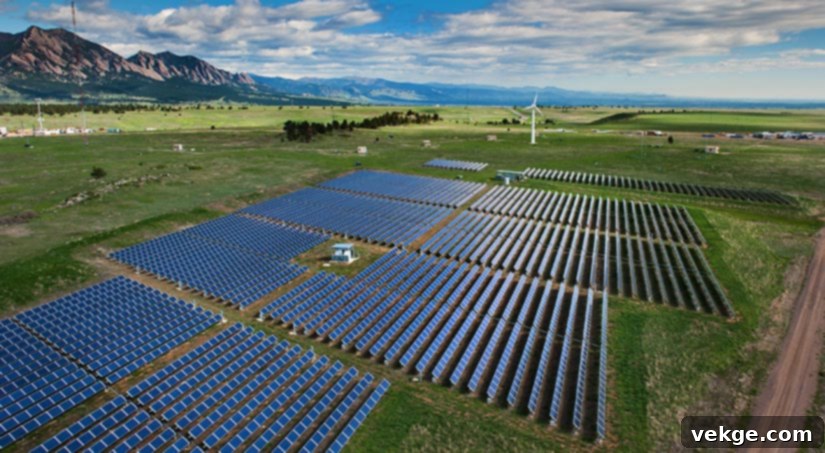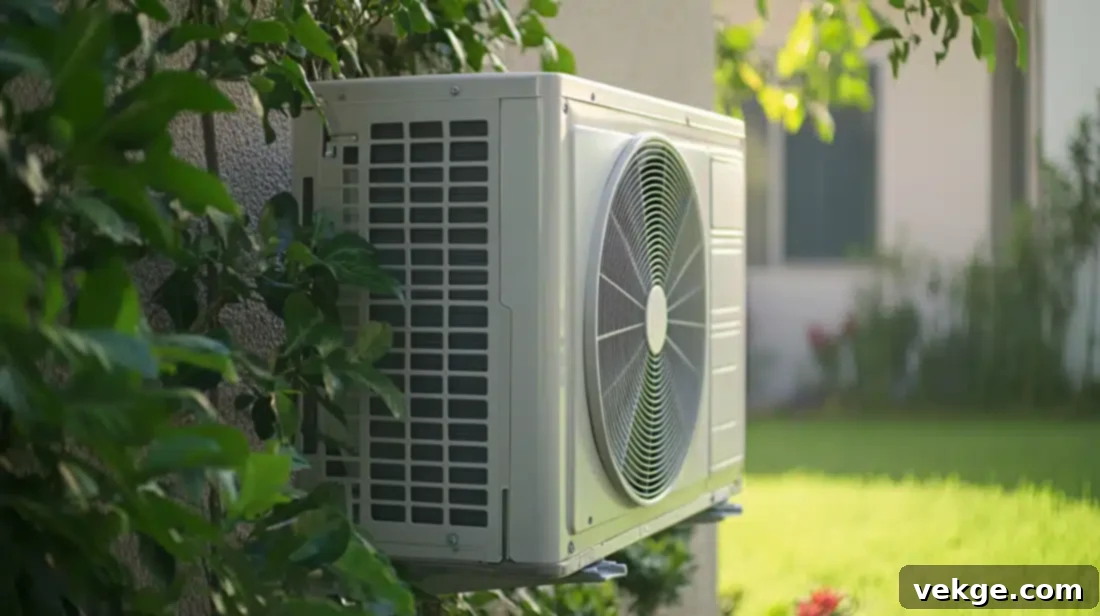Ultimate Guide to Energy-Efficient Air Conditioning: Save Money & Boost Home Comfort
In today’s world, creating a comfortable yet sustainable and cost-effective home environment is a top priority for many homeowners. With rising energy costs and growing environmental concerns, finding intelligent solutions to keep your living space cool without breaking the bank or harming the planet has never been more important. Fortunately, a wide array of energy-efficient air conditioning options are now available that not only significantly reduce your energy consumption but also lead to substantial savings on utility bills and minimize your environmental impact. Explore your best cooling options and how they can transform your home comfort and budget.
1. Understanding Energy Efficiency in Air Conditioning: Key Metrics and Certifications

Before diving into specific systems, it’s crucial to understand how energy efficiency in air conditioning is measured. These metrics help you make informed decisions when purchasing or upgrading your cooling system.
SEER and SEER2 Ratings
The Seasonal Energy Efficiency Ratio (SEER) is a fundamental metric used to evaluate the energy efficiency of air conditioners. It calculates the cooling output of an AC unit during a typical cooling season divided by the total electric energy input during the same period. Simply put, a higher SEER rating indicates a more energy-efficient unit.
- SEER (Seasonal Energy Efficiency Ratio): Historically, modern air conditioners typically boast SEER ratings ranging from 13 to 25. Units with higher SEER ratings generally come with a higher upfront cost. However, this initial investment is often recouped through significant reductions in energy consumption and lower utility bills over the system’s lifespan.
- SEER2: As of January 1, 2023, new Department of Energy (DOE) regulations introduced SEER2, an updated testing procedure designed to provide a more accurate representation of an HVAC system’s real-world energy consumption. SEER2 ratings are generally lower than their SEER equivalents for the same unit, reflecting stricter testing conditions. When purchasing a new system today, always look for the SEER2 rating.
Energy Star Certification
Energy Star is a highly recognizable, government-backed symbol of energy efficiency. It provides simple, credible, and unbiased information that both consumers and businesses rely on to make well-informed decisions about energy consumption. Air conditioning units and other home appliances bearing the Energy Star label meet stringent energy efficiency guidelines set by the U.S. Environmental Protection Agency (EPA). Choosing Energy Star certified products ensures you’re investing in a system that has been independently verified to save energy without sacrificing performance or features.
2. Types of Energy-Efficient Air Conditioning Systems for Every Home

The market offers a diverse range of energy-efficient air conditioning systems, each with unique advantages and best-suited applications. Understanding these options will help you choose the right fit for your home’s structure and your specific cooling needs.
Central Air Conditioning Systems
Central air conditioning remains a perennial favorite for whole-home cooling. Modern central AC units have undergone significant advancements to improve their energy efficiency. When selecting a new central system, prioritize units with high SEER2 ratings and Energy Star certification. Furthermore, integrating smart features like programmable thermostats and zoning systems can dramatically enhance efficiency by allowing you to cool only occupied areas of the home, rather than wasting energy on empty rooms. Proper ductwork design and sealing are also paramount for central air efficiency.
Ductless Mini-Split Systems
Ductless mini-split systems are an excellent, highly flexible option, particularly for homes without existing ductwork, additions, or for targeted cooling in specific zones. These systems consist of an outdoor compressor/condenser unit connected to one or more indoor air-handling units via a small conduit that requires only a 3-inch hole in the wall. Key benefits include:
- High Energy Efficiency: They avoid the energy losses associated with ductwork.
- Zoned Comfort: Each indoor unit can be controlled independently, allowing for personalized temperature settings in different rooms and significantly reducing overall energy usage by cooling only the spaces that need it.
- Ease of Installation: Their ductless nature makes installation quicker and less disruptive than traditional central air systems.
- Heating Capabilities: Many mini-splits are also heat pumps, providing efficient heating in cooler months.
Window and Portable Units
For smaller spaces, apartments, or supplemental cooling, energy-efficient window units and portable air conditioners are practical and often more affordable options. These units have evolved significantly, now frequently featuring:
- Programmable Timers: To schedule cooling cycles, ensuring comfort when needed and saving energy when you’re away.
- Energy-Saving Modes: Often called “Eco” or “Sleep” modes, which adjust settings to minimize power consumption.
- High EER Ratings: While SEER is for central systems, the Energy Efficiency Ratio (EER) is typically used for room air conditioners, measuring efficiency at a single operating point. Look for units with high EER ratings.
- Smart Features: Some models offer Wi-Fi connectivity and app control.
Geothermal Heat Pumps
Often considered the pinnacle of energy-efficient cooling and heating, geothermal heat pumps utilize the stable temperatures of the earth to regulate indoor climate. These systems transfer heat from your home into the ground in summer (for cooling) and from the ground into your home in winter (for heating). While they have a higher upfront installation cost due to the excavation required for the ground loops, the long-term benefits are substantial:
- Exceptional Efficiency: Geothermal systems are incredibly efficient, typically achieving SEER ratings well into the 30s, far surpassing conventional air conditioners.
- Lower Operating Costs: They can reduce heating and cooling costs by 25-50% compared to traditional systems.
- Longevity: The underground components can last for 50+ years, while the indoor unit typically lasts 20-25 years.
- Environmental Benefits: They significantly reduce greenhouse gas emissions by minimizing electricity consumption.
3. Innovative Technologies for Enhanced Efficiency and Smart Comfort
Beyond the fundamental types of systems, several cutting-edge technologies are integrated into modern AC units and controls to push the boundaries of energy efficiency and user convenience.
Inverter Technology and Variable Speed Compressors
A significant leap in AC technology comes from inverter-driven variable-speed compressors. Unlike traditional single-speed compressors that cycle on and off (which wastes energy and creates temperature fluctuations), inverter technology allows the compressor to continuously adjust its speed and output to precisely match the cooling demand. This results in:
- Consistent Comfort: More stable temperatures and better humidity control.
- Reduced Energy Consumption: The system operates at lower, more efficient speeds for longer periods, avoiding energy spikes.
- Quieter Operation: Variable speeds lead to less noise from the outdoor unit.
- Extended Lifespan: Less wear and tear on components due to fewer on/off cycles.
Smart Thermostats
Smart thermostats are no longer just a luxury; they are a critical component of an energy-efficient home. Devices like the Nest Learning Thermostat or Ecobee SmartThermostat offer advanced features that optimize energy use and integrate seamlessly into your smart home ecosystem. Key functionalities include:
- Learning Capabilities: They use AI to learn your schedule, preferences, and even your home’s heating and cooling patterns, automatically adjusting temperatures for optimal efficiency.
- Remote Control: Manage your home’s temperature from anywhere via smartphone apps, allowing you to turn the AC off when you leave and back on before you arrive.
- Geofencing: Some models can detect when you’re leaving or approaching home using your phone’s location, adjusting settings accordingly.
- Energy Reports: Provide detailed insights into your energy usage, helping you understand and manage your consumption better.
- Integration: Connect with other smart home devices, voice assistants, and utility demand response programs.
Zoning Systems
For homes with central air conditioning, a zoning system allows you to divide your house into different temperature zones, each controlled by its own thermostat. This prevents overcooling or overheating unused areas. By installing motorized dampers in your ductwork, a zoning system directs conditioned air only where it’s needed, drastically reducing energy waste and enhancing personalized comfort.
4. Additional Strategies for Maximizing Energy Efficiency
Beyond selecting the right AC system, several practical measures can significantly boost your home’s overall energy efficiency and reduce the workload on your air conditioner.
Regular Maintenance
Consistent and proper maintenance of your air conditioning system is paramount for preserving its efficiency and extending its lifespan. Neglected systems can lose 5-10% of their efficiency each year. Essential tasks include:
- Filter Replacement/Cleaning: Dirty filters restrict airflow, making the unit work harder. Replace disposable filters monthly or clean reusable ones regularly.
- Coil Cleaning: Evaporator and condenser coils accumulate dirt and debris, hindering heat transfer. Professional cleaning ensures they operate optimally.
- Refrigerant Checks: Low refrigerant levels indicate a leak, which impairs cooling capacity and efficiency. A qualified technician can detect and repair leaks and recharge the system.
- Annual Professional Tune-ups: Schedule a yearly check-up with an HVAC professional to inspect all components, calibrate controls, and identify potential issues before they become costly problems.
Proper Home Insulation
A well-insulated home acts as a thermal barrier, dramatically reducing the amount of heat entering in summer and escaping in winter. This directly translates to a reduced workload on your air conditioning system. Focus on:
- Attic Insulation: Often the biggest culprit for heat gain. Ensure adequate R-values for your climate.
- Wall and Floor Insulation: Improves the overall thermal envelope of your home.
- Sealing Air Leaks: Caulk and weatherstrip around windows, doors, and utility penetrations to prevent uncontrolled air infiltration.
Sealing and Insulating Ducts
Leaky or uninsulated ducts can lead to substantial energy loss, especially if they run through unconditioned spaces like attics or crawl spaces. Studies show that duct leakage can account for 20-30% of an HVAC system’s energy consumption. Sealing and insulating your ductwork ensures that cooled air reaches its intended destination without escaping into walls or other areas, maximizing efficiency and comfort.
Strategic Use of Ceiling Fans
Ceiling fans don’t cool a room directly; instead, they create a wind-chill effect on your skin, making you *feel* cooler. This allows you to set your thermostat a few degrees higher (e.g., from 72°F to 75°F) without sacrificing comfort, resulting in noticeable energy savings. Remember to turn fans off when leaving a room, as they only cool people, not spaces.
Window Treatments and Landscaping
Simple passive strategies can also play a significant role. Install energy-efficient window coverings like blinds, curtains, or awnings to block solar heat gain, especially on south- and west-facing windows. Strategic landscaping, such as planting deciduous trees to shade your home in summer, can also naturally reduce heat absorption.
5. Renewable Energy Integration: The Future of Sustainable Cooling

For the most sustainable and forward-thinking approach, consider integrating renewable energy sources, particularly solar power, with your home’s cooling system. This not only enhances energy efficiency but also dramatically reduces or even eliminates your reliance on the grid for cooling.
- Solar-Powered Air Conditioners: These systems use solar panels to generate electricity, either directly powering the AC unit or offsetting its grid electricity consumption. Some advanced solar ACs can even store excess solar energy in batteries for use at night or on cloudy days, offering true energy independence.
- Pairing with Heat Pumps: Coupling highly efficient systems like geothermal or air-source heat pumps with a solar panel array can create a nearly net-zero energy home. The solar panels generate the electricity needed to run the heat pump, providing both heating and cooling with minimal to zero environmental impact and significantly reduced long-term operating costs.
Conclusion: A Cooler, Greener, More Affordable Home Awaits
Investing in energy-efficient air conditioning solutions is one of the smartest decisions you can make for your home and your wallet. By understanding key efficiency metrics like SEER2, exploring advanced systems like ductless mini-splits and geothermal heat pumps, and embracing smart technologies like inverter compressors and intelligent thermostats, you can achieve superior comfort while drastically cutting down on energy consumption and utility bills. Remember that proper maintenance, robust insulation, and even passive strategies like window treatments further amplify these savings.
Transitioning to more sustainable cooling practices not only benefits your household budget but also plays a vital role in reducing your carbon footprint and contributing to a healthier planet. Take the first step towards a cooler, greener, and more affordable home by researching these options and consulting with a trusted HVAC professional to tailor the perfect energy-efficient solution for your unique needs. You can find more details and expert advice here to begin your journey to optimized home comfort and efficiency.
